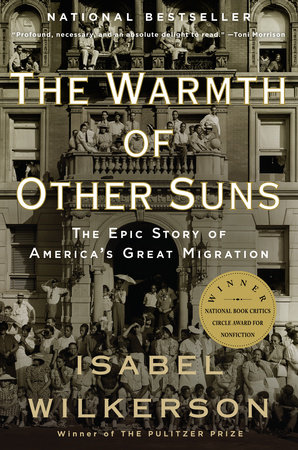Products You May Like
The conversation around how race impacts the structures of our cities has evolved over the years from an equity framework, to one focused on justice and inclusion, to, today, one that is actively anti-racist.
An anti-racist city is one that is repairing the damage from racism and remaking itself into a place that affirms the lives of all people and enables everyone to thrive—regardless of race or ability. What this looks like in specific communities will vary, and a lot of work—and reading—still needs to be done to imagine it. Creating anti-racist cities could start with identifying how our cities are racist, which policies and practices perpetuated racism, and exploring alternative systems. Urban planning has been complicit in racism for too long.
We asked architects who have been working at the intersection of cities and race to suggest required reading for anyone interested in defining the future of anti-racist cities. The titles below have helped these architects better understand the social, political, and spatial dynamics that have contributed to unequal cities. Reading these books is a foundation for the world-building on the horizon.

The Warmth of Other Suns: The Epic Story of America’s Great Migration (Random House, 2010)
By Isabel Wilkerson
“The story tells the migration of blacks in America from the South to the North for greater freedom, jobs, education, and hope for themselves and their children. They faced new forms of discrimination, disappointment, and harm, which continues today. The story provides grounding to understand the plight and struggle of African-Americans in this country that brings us to the present time. It’s not a North, South, black, or white problem; this describes our American problem.” —Kimberly Dowdell, president of the National Organization of Minority Architects (2019–2020)

Mismatch: How Inclusion Shapes Design (MIT Press 2018)
By Kat Holmes
“This book is about inclusive design. The chapter titled ‘With and For,’ which I contributed to, touches on both injustices in urban design as well as the systematic barriers for more diversity in architecture, which is needed to create inclusive cities. A visual telling of this chapter is also shown in the 50-minute documentary just released on Hulu titled Design for All, which shows that kids of today, no matter the challenge or background, can grow up to change the world through design.” —Tiffany D. Brown, architect and founder of 400 Forward, an initiative to bring more black women into architecture

From the War on Poverty to the War on Crime (Harvard University Press, 2016)
By Elizabeth Hinton
“Elizabeth Hinton’s painstakingly historic look at the intersection of housing policy and policing black neighborhoods is indispensable in understanding where we are today. The substitution of ‘crime control’ as urban policy in the 1970s and beyond is just one example in the book of how the obsession with policing black communities impeded holistic economic development and imaginary urban design—missed opportunities that still haunt us today.” —Milton S.F. Curry, USC School of Architecture dean

The South Side: A Portrait of Chicago and American Segregation (Picador, 2017)
By Natalie Y. Moore
“Chicago invented modern-day segregation through textbook models of redlining and infrastructure violence that, to this day, create a palimpsest of inequities across the city. It will be difficult to get someone to read and research how their privilege was designed, but this book provides an introduction to place-based racism and segregation. Ms. Moore weaves her personal narrative of growing up on the South Side of Chicago with alternating chapters outlining the policies that impacted her childhood, education, employment, and housing opportunities. While these histories are based in Chicago, the tears are spread across the country, and Ms. Moore captures this just as equally in both photos and maps.” —Katherine Darnstadt, founder of Latent Design

The Color of Law: A Forgotten History of How Our Government Segregated America (Liveright, 2017)
By Richard Rothstein
“When we wonder how we got to where we are, we have to look at the local, state, and federal laws in place that allowed for segregation and discrimination to continue. Rothstein takes an in-depth look at how private organizations, groups, and courts were able to take advantage of laws that were actually in the public domain, promoting everything from redlining to disinvestment in neighborhoods of color. It underscores the need to understand law as a complement to architecture and planning, as well as for architects and planners to run for public office to advocate for justice, diversity, equity, and inclusion.”—K.D.

